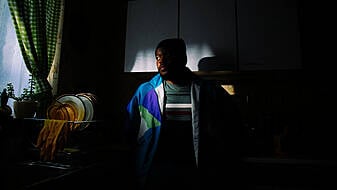Any delay in exiting the “toxic hot environment” of the burning Stardust nightclub would have increased the chances of death, an expert witness has told an inquest jury in the Dublin District Coroner’s Court.
On Thursday, Dr Richard Shepherd told the jury that it was self-evident that if anyone could have escaped that toxic environment quicker, they “more likely than not” would have sustained less damage.
Dr Shepherd was giving evidence along with fellow consultant pathologists Dr Nat Carey and Dr Benjamin Swift on the causes of death of the 48 people who were killed when fire consumed the Stardust nightclub in the early hours of Valentine’s Day, 1981.
The first pathology report to be heard was that on victim Jacqueline Croker, who Dr Shepherd said was last seen running across an aisle of seats after the outbreak of the fire, when she tripped and fell. She was 18 at the time of her death.
Dr Shepherd confirmed that the cause of death was rapid incapacitation due to the inhalation of fire fumes and heat.
He agreed with Michael O’Higgins SC, representing Jacqueline’s family, that incapacitation meant loss of consciousness, which could be “mercifully described as a loss of awareness”.
Evidence was also heard of the death of Liam Dunne, who did not die until 25 days after the fire and remained at the hospital.
Dr Shepherd said he was last seen on the dance floor in front of the stage and was removed alive from the Stardust, before being pronounced dead on March 11, 1981. He was 18 at the time of his death.
Simon Mills SC, a member of the coroner's legal team, said that Liam was slightly different from the other cases, as he suffered bronchial pneumonia and lung abscesses, which Dr Shepherd said was “a step further along the line of seriousness in the lung infection”.
Dr Shepherd confirmed that death resulted from burn complications and the inhalation of fire fumes.
Des Fahy KC, representing the family of Liam Dunne, asked whether the consequences would have been so severe if patrons had been able to escape the building more quickly.
“It is self-evident if you can escape from that toxic environment quicker, it is more likely than not that the damage would have been less,” Dr Shepherd said.
Fumes
The jury next heard that Michael Farrell, who was aged 26 at the time of his death, was found to have the second-highest hydrogen cyanide reading of any of the victims, and a carbon monoxide reading of 42 per cent.
Dr Shepherd confirmed that the cause of death was rapid incapacitation due to the inhalation of fire fumes and heat.
Michael French was one of five victims not identified until 2007, when he was identified from mitochondrial DNA evidence. He was 18 at the time of his death.
Mr Mills said he had a carbon monoxide reading of 24 per cent, which would not be fatal on its own but must be read in the context of other noxious substances in the area. He said there were significant burns to the body, but it could not be confirmed if these occurred before death, although there was evidence of exposure to heat.
Dr Shepherd confirmed that the cause of death was rapid incapacitation due to the inhalation of fire fumes and heat.
The next report related to David Flood, who Dr Shepherd said was last seen alive sitting in a seat asleep, and there was an unsuccessful attempt to move him to an exit. He was 18 at the time of his death.
Mr Mills said that he was found to have carbon monoxide levels of 56 per cent, which is one of the highest reported in the victims.
Dr Shepherd confirmed that the cause of death was the inhalation of fire fumes.
Mr O’Higgins, representing the family, said that while there was smoke blackening on the face, front of the neck and wrists and hands, elsewhere the body was quite unburned, which suggested he woke up and made his way to the bar area.
Dr Shepherd said it was a reasonable inference to draw that Mr Flood woke up and demonstrated some purpose in managing to get himself into a place where the fire was not burning.
'Significant'
A report was given on Thelma Frazer, who was aged 20 at the time of her death.
Mr Mills said that a toxicology report showed the presence of carbon monoxide to a level of 25 per cent, which was significant but below a fatal level.
Dr Shepherd confirmed that the cause of death was rapid incapacitation due to the inhalation of fire fumes and heat.
Josephine Glen survived for five days in intensive care after the fire. Dr Shepherd said that after the fire was first seen, Josephine ran to an exit believed to be exit five and was later found by an ambulance attendant lying outside the Stardust and brought to hospital.
On February 19th, 1981, she was pronounced dead, aged 16.
Dr Shepherd said that the cause of death was complications of the inhalation of fire fumes only.
Brenda Campbell KC, representing the family, said that Josephine’s boyfriend had given evidence that he urged her to go to exit five and there were 15 people in front of them, and he saw a chain around the doors.
“Any delay in exiting that toxic hot environment would have increased the chances of death,” said Dr Shepherd.
The jury heard that Brian Hobbs, who was 21, was found to have a level of 39 per cent carbon monoxide in his body.
Mr Mills said there was also evidence of the exposure of the body to significant heat, and Dr Shepherd confirmed that the cause of death was rapid incapacitation due to the inhalation of fire fumes and heat.
In the report on Eugene Hogan, Dr Shepherd said that when the fire first became visible, Eugene was on the dance floor. As he was then going up the stairs, the lights went out, and that was the last time he was seen alive. He was 24 at the time of his death.
Mr Mills said Eugene was found to have a carbon monoxide level of 20 per cent, which was well short of the 50 per cent level associated with likely fatality, to which Dr Shepherd said that the toxic environment more likely than not played a part as well.
Dr Shepherd confirmed that the cause of death was rapid incapacitation due to the inhalation of fire fumes and heat.
Identification
Murtagh Kavanagh was one of the five victims who was not identified until 2007 when mitochondrial DNA evidence was obtained. He was 27 at the time of his death.
Dr Shepherd said that the cause of death was rapid incapacitation due to the inhalation of fire fumes and heat. He said there was a 48 per cent level of carbon monoxide in the body, which is a high amount.
The last pathological report given was that of Robert Kelly, who was 17 at the time of his death.
Mr Mills said the level of carbon monoxide in the body was between 3 and 6 per cent, which was among the lower levels reported among the victims, but it had to be factored in that other gases were inhaled which were not measured, and there was also the depletion of oxygen in the atmosphere.
Dr Shepherd confirmed that the cause of death was rapid incapacitation due to the inhalation of fire fumes and heat.
The inquest continues on Friday in the Pillar Room of the Rotunda Hospital.







